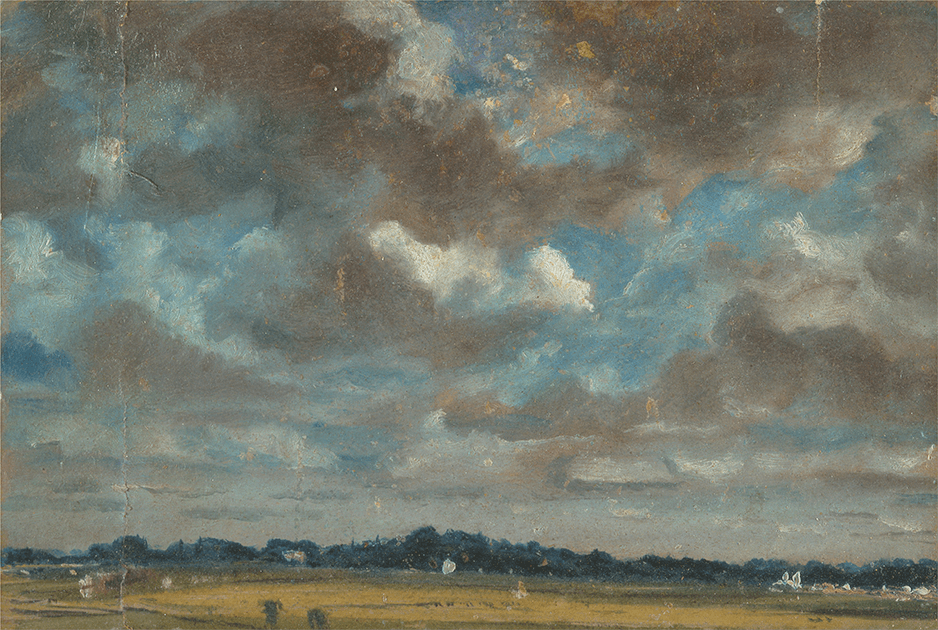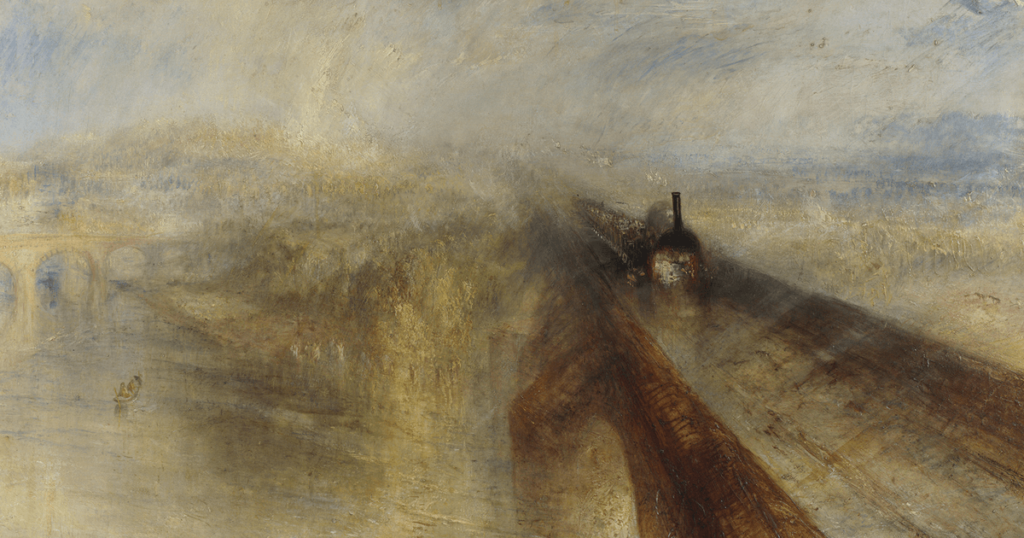
Elegy Landscapes: Constable and Turner and the Intimate Sublime by Stanley Plumly; Norton, 272 pp., $29.95
Elegy Landscapes is a delicately wrought meditation on the effect of the loss of loved ones on two painters of genius, John Constable and Joseph Mallord William Turner. There is something odd, even startling about the study of such a particular aspect of two 18th-century lives, however trimly composed and relatively succinct. Who has the time nowadays for a rapturous contemplation of the abstruse? Even to ask this of a reader takes bravura, not to mention the patience needed for such an inquiry.
Stanley Plumly, however, has received praise for his “obsessive, intricate, intimate and brilliant” work about the death of Keats (Posthumous Keats, 2008) and is as well regarded for his poetry as for his scrutiny of lives. Here he has chosen to explore two distinctly different personalities afflicted by a common tragedy and how this, as he sees it, changed each of them as artists. To begin with, there is Constable, who depicted scenes close by his Suffolk village, outlining each leaf with almost claustrophobic exactitude. Then there is the peripatetic Turner, whose wanderings took him far and wide, eschewing the familiar in pursuit of shimmering space and vast, soaring seas.
They were almost exact contemporaries—Turner was born on April 23, 1775, and Constable on June 11, 1776. Turner’s father was a barber living in London’s lively Covent Garden, and his unstable mother was eventually moved to an insane asylum.
Constable, by contrast, was the son of a wealthy corn merchant at a moment when Suffolk had not yet been defaced by the Industrial Revolution. The pastoral ideal that Constable captured in his work, Plumly writes, “can also mean an appeal to nostalgia, to ‘a green thought in a green shade,’ to something golden, Virgilian, under the glass dome of the sun, as well as to something actual, such as great century white oaks and maples. … It means longing for what is vanishing—if not vanished …”
Turner’s childhood was formed by streets crowded with flower girls, pickpockets, tradesmen, coaches, playhouses, dirt, mud, and noise at all hours. Barely a stone’s throw away from this semi-slum was the river, the “great Thames working the oily flow of its commerce,” edged by “stretches of beach, rotting wharves and remains of pilings.’”
Just as the nearby River Stour figures in many of Constable’s works, the Thames was “the first important water in Turner’s imaginative and spiritual life.” The subject matter was at hand, and so were the means: pencil and paper. Turner had an astonishing ability to draw at an early age. Some parents might discourage such a useless pursuit, but Turner’s father understood his son’s talent and encouraged its development. Turner’s first watercolors were exhibited at the Royal Academy when he was only 15. It took a few more years to move from these exact renderings to landscapes, then to the river and the sea itself. Turner was financially successful almost from the start. When he died of cholera at the age of 76, he left more than 300 paintings, finished and unfinished, and some 20,000 sketches, drawings, and watercolors. But as the decades rolled by, Turner’s reputation steadily declined and many of his works simply vanished.

J. M. W. Turner, Rain, Steam, and Speed—The Great Western Railway, 1844 (Wikimedia Commons)
As British art historian Kenneth Clark recounts in his 1975 autobiography, Another Part of the Wood, he, as director of the National Gallery in London in the 1930s, went through that vast building in search of rooms to serve as air-raid shelters. Somewhere in a neglected vault, he found 20 rolls of what he took to be filthy old tarpaulins. “I was just about to tell the head attendant to throw them away, when curiosity prompted me to ask him to bring them upstairs.” Clark got down on his hands and knees with a brush and bucket of water and began gently cleaning the surface. “Out came an unquestionable Turner.” There were 19 more, rolled up and forgotten. “They are now among the most admired Turners in the Tate,” Clark wrote.
Constable, according to Clark, had “the slowest start of any painter before the time of Grandma Moses.” He was 23 before he persuaded his father to let him study art in 1799. Three years later, he exhibited his first picture at the Royal Academy. It was “small, shy and self-effacing and naturally attracted no comment.” That same year Turner became a full Academician.
It would be even longer before Constable was painting, with energy and passion, the masterpieces by which he is best known. “Passion” he once said, “is for me but another word for feeling.” His courtship of Maria Bicknell, the love of his life, was equally slow to come to fruition. Their marriage, which brought him deep happiness, was shadowed from the start by her illness—tuberculosis—which killed her 12 years later, but not before she bore seven children. Plumly sees what happened as a result. He writes that Constable had always been “self-contained” and emotionally isolated. Such tendencies were exacerbated by his beloved wife’s death just after the birth of their seventh child. His contemporaries called it melancholy; we would now consider it evidence of a deep depression from which he never recovered.
It is harder to find a similar cause and effect in Turner’s work after his father’s death in 1829, when he was in his early 50s. There is certainly a reference to the loss of this loving and committed parent, his loyal proponent and art supplier and all-around odd-job man. Plumly refers to Turner’s painting Death on a Pale Horse, executed in 1830, that has to have been directly inspired by the loss. And perhaps Turner’s subject matter, on balance, darkened after that, but then he always tended to favor calamitous events, such as shipwrecks or, in a famous tragedy, the burning of the Houses of Parliament. So the argument is tentative at best. As for his love of works made of “tinted steam,” as Constable wrote, it is hard to see them as funereal and, indeed, they never have been.
In fact, Plumly does not find a sense of despair in Turner’s final works so much as sadness sublimated by a deeper and grander sense of the universal. He writes that Turner’s landscapes are “absorbed into the reality of the sun … entering the projected space of the painting in order to join the art of it all itself. Turner, at the end, is completely at one with what he is seeing.”
It is a fitting epitaph.

